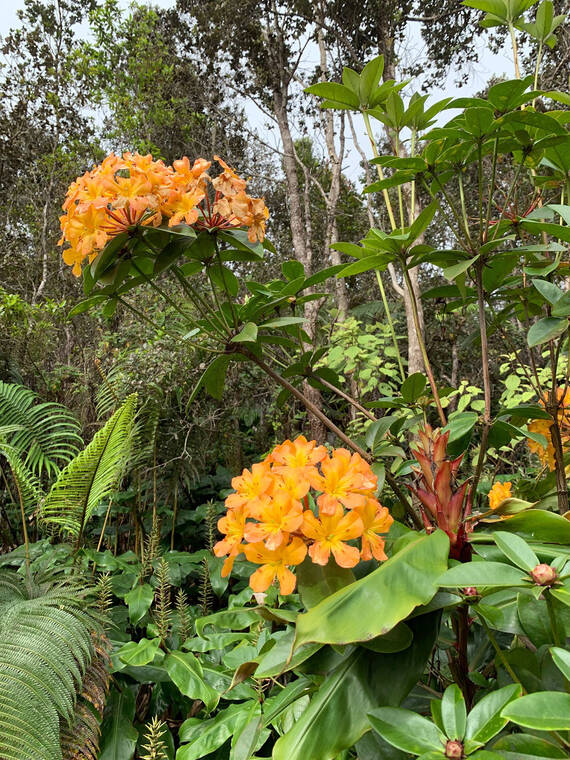Tropical Gardening: Hawaii Rhododendron Society meets again
Finally, after almost two years of avoiding people due to the pandemic, plant societies like the Hawaii chapter of the America Rhododendron Society are digging out of hibernation and having safe gatherings again. This means they can share their love, knowledge and starts with one another and those folks interested in this amazing family of plants. As we head in to spring, March is likely to be the month that many of the COVID-19 restrictions are eased and we can once again connect with folks in social settings.
Tropical Asia is well known for its spectacular rainforests loaded with many species of palms but it is easy to miss the tropical Vireya Rhododendrons growing as epiphytes high in the tops of gigantic trees. Most folks spend their time looking at terrestrial plants,or avoiding snakes and other jungle critters but look up and you will be elated.
ADVERTISING
Throughout the northwest U.S. and Japan, one of the highlights of spring is the mass blooming of azaleas and rhododendrons. In Hawaii, these attractive garden shrubs are popular in cool, moist areas. In the spring, the plants are available as potted houseplants at our local garden shops and nurseries. Now Vireya Rhododendrons are becoming available throughout the year as more nurseries and gardeners are becoming aware of them.
If you’re not quite sure about the tropical Rhododendrons and how to grow them, then get acquainted with the experts at the Hawaii Chapter of the Rhododendron Society meeting. Mark your calendar for their next meeting on Sunday, March 20, at noon. For more information on location and other details call President Lucy Albright at 808 315-9345 or Sherla Bertelmann at 808 966-9225. Check out their website at www.HawaiiVireyaARS.org for future meeting dates and news.
Another upcoming event not to miss is the Friends of the Zoo fundraising plant sale on Saturday, March 19. It will be held at the Equestrian Center.
Vireyas are a part of a small but widely distributed family found in many parts of tropical Asia. Some species and varieties you will find on the market bloom in brilliant reds, whites, pinks, salmons and even mixes of white-pink and white-red.
Typical azaleas are slow to moderate growing in Hawaii. A good specimen 6-8 inches high takes at least two years to reach their prime flowering. They are not easily grown from cuttings. That is why a gift of an azalea is something special. On the other hand, many Vireyas may be easily grown from cuttings and can become large shrubs or small trees. This family of flowering plants is extremely variable, but have certain characteristics in common.
When you buy a potted Vireya living bouquet, they are easy to care for if you follow a few simple rules.
If the leaves get heavy with dust or sooty mold, wash them off with water. This will discourage insect and mite buildup. The proper watering of plants is more important than giving them a bath. In general, plants require a thorough soaking at least once a week. In warmer temperatures, plants in containers may require more water. When planted in the garden, they are much happier. Where rainfall is sufficient, they take almost no care. We have grown quite a few in Kaloko Mauka, and they are happy unless we have an extended dry period
Azaleas and Vireyas grow well at temperatures between 60 and 80 degrees. Therefore, protect the plants from being broiled alive by direct sun, hot or windy areas. In cool mauka areas, they may be placed in sun.
Like people, they like their food served at regular intervals. Special acid azalea fertilizers are available. The best suggestion of feeding is to follow the directions on the plant food container. Since they are slow growers, they should only need fertilizer once every two to three months.
Remember, azaleas and Vireyas require an acid high organic soil. If you decide to plant them in the garden or repot them, give plants a mix high in peat moss. Make sure you don’t plant them in soils that are high in calcium. Avoid planting in concrete containers, near sidewalks or concrete foundations since these contain calcium. Also remember, they should not be planted near the ocean or in hot, dry or windy areas.


